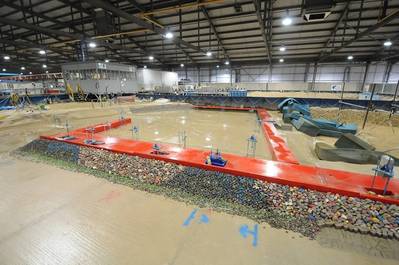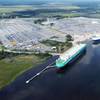Optimizing Aberdeen's Harbour Expansion Design
A £350m ($431m) development plan to expand Aberdeen Harbour was approved on December 19, 2016.
HR Wallingford has been involved in the project from its initial concept stages in 2010, and will be working with Aberdeen Harbour Board right through to construction, and undertaking modelling work for the approved contractor, Dragados UK Ltd. The new facilities will include 1,400 meters of new quay, with a water depth of up to 10.5 meters. Construction will begin in early 2017, with the project due to be completed in 2020.
Aberdeen Harbour currently has limited capacity to handle the larger vessels for which deep water berthing is required. Being able to provide increased support for the renewables and decommissioning sectors, as well as accommodating larger cruise ships, presents significant economic growth opportunities for the harbour and its customers. Aberdeen Harbour Board commissioned HR Wallingford to undertake a feasibility study and subsequent design studies, and the preparation of tender packages to expand the port. Approval has now been awarded for the construction of the additional facilities at Nigg Bay.
The design, construction and operation of this harbour extension, which lies to the south of the existing harbour on the east coast of Scotland, presents challenges for its development and implementation. This includes planning for the severe waves that this location is exposed to, with some extreme waves reaching over eight metres in height.
HR Wallingford ‘s role in the project has involved advising on the selection of the precise location of the new port, and on testing and refining the design to meet these challenges.
The initial scope included port masterplanning, assessing capital cost estimates, marine operability (including navigation and berth operability), environmental issues (mitigating impact on existing environmentally-sensitive areas and adjacent coastline), landside access and operations, constructability and project schedule. Subsequent work included numerical modelling of waves, flows and sediment transport, navigation simulation, 2D and 3D physical modelling of the breakwater structures and wave disturbances, and preparing construction specification documentation.
In a wave basin in its physical modelling laboratories in Oxfordshire, HR Wallingford‘s engineers have built a scaled model, 60 times smaller than the real harbour, which has been fine-tuned at each stage of the testing.
The new harbour involves the construction of:
- Two new 600m long breakwaters that are 20m high to ensure safe sheltered berthing. The breakwaters will be protected with heavy concrete armour. Some of this armour will be over 40 tonnes in weight to prevent the breakwaters from becoming damaged during adverse weather. Over 1km of quay walls where vessels will be able to load and unload.
- Dredging: 2 million m3 of dredged material will be dug out to provide water deep enough for larger vessels including 300m cruise ships and other larger vessels. Much of this dredged material will be used to make new land behind the quay walls.
Ian Cruickshank, Director of Engineering and Delivery at HR Wallingford, said: “The physical model is crucial to ensuring the optimal design is achieved. It allows us to model accurately the weather conditions that the chosen location will be exposed to, and to make sure that the design is suited to the vessels that will be using the new harbour.”
“This includes checking that the height of the waves in the harbour would not become too high to make operating conditions, for example the loading and unloading of ships, difficult; that the breakwaters would be able to cope in storm conditions, and that the design of the new port would allow large vessels to enter the harbour, while preventing storm waves from doing the same.”
The engineers are also using HR Wallingford’s UK Ship Simulation Centre to simulate navigation in a virtual harbour extension to ensure safe navigation access, and assess operational conditions and procedures.











